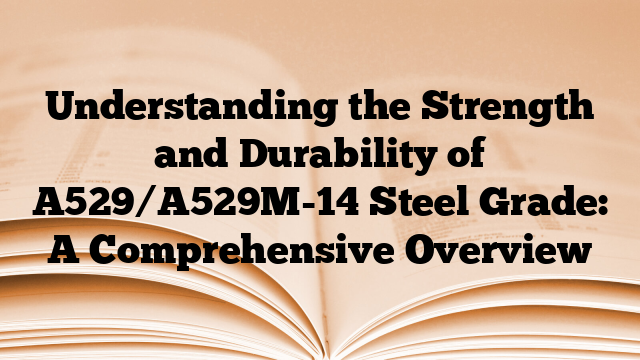A529/A529M-14 is a standard specification for high-strength carbon-manganese steel shapes, plates, and bars used in structural applications. It covers two grades, grade 50 and grade 55, which have different chemical compositions and mechanical properties.
The chemical composition of A529/A529M-14 steel grades is as follows:
– Carbon (C): The maximum carbon content for both grades 50 and 55 is 0.26%. Carbon is the primary strengthening element in steel and helps improve its strength and hardness.
– Manganese (Mn): The maximum manganese content for grade 50 is 1.35%, while for grade 55 it is 1.60%. Manganese improves the strength and toughness of steel and also aids in grain refinement.
– Phosphorus (P): The maximum phosphorus content for both grades is 0.04%. Phosphorus is a harmful impurity in steel and can reduce its toughness and ductility.
– Sulfur (S): The maximum sulfur content for both grades is 0.05%. Like phosphorus, sulfur is a harmful impurity that can negatively impact the mechanical properties of steel.
– Silicon (Si): The maximum silicon content for both grades is 0.40%. Silicon improves the strength and hardness of steel and also contributes to its deoxidation during the steelmaking process.
The mechanical properties of A529/A529M-14 steel grades are as follows:
– Yield Strength (YS): The minimum yield strength for grade 50 is 345 MPa (50 ksi), while for grade 55 it is 380 MPa (55 ksi). Yield strength is the maximum stress that a material can withstand without permanent deformation.
– Tensile Strength (TS): The minimum tensile strength for grade 50 is 450 MPa (65 ksi), while for grade 55 it is 485 MPa (70 ksi). Tensile strength is the maximum stress that a material can withstand before breaking.
– Elongation: The minimum elongation for both grades is 18%. Elongation is a measure of a material’s ability to deform before fracturing under tensile stress.
– Charpy V-Notch (CVN) Impact Toughness: The minimum CVN impact toughness for both grades is 27 J (20 ft-lbf) at -20°C (-4°F). Impact toughness measures a material’s ability to absorb energy during impact loading.
Overall, A529/A529M-14 steel grades offer high strength and good toughness, making them suitable for structural applications where strength and durability are required. The specific grade to be used depends on the design requirements and the desired mechanical properties.

